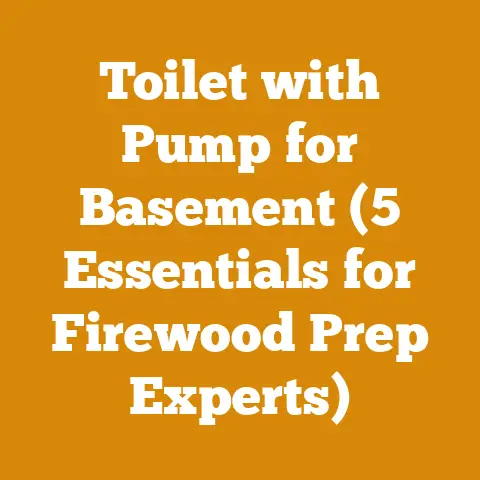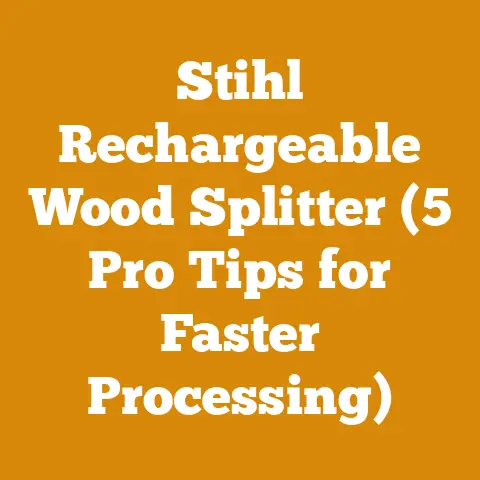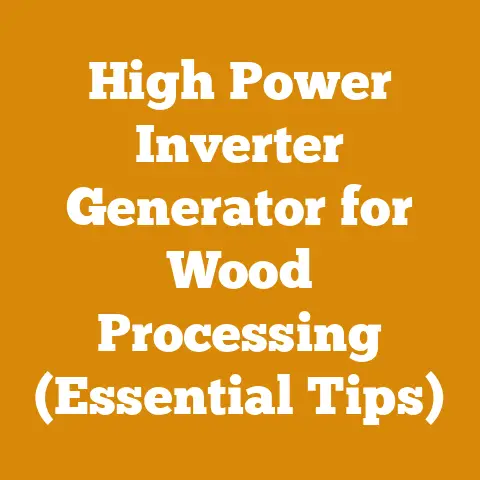Humidifier for Pellet Stove (5 Pro Tips to Combat Dry Air)
Humidifier for Pellet Stove (5 Pro Tips to Combat Dry Air)
I’ve always appreciated the cozy warmth a pellet stove brings to my home during the colder months. There’s something uniquely comforting about it, a feeling reminiscent of my grandfather’s old wood-burning stove. However, I quickly learned that this warmth often comes with a significant drawback: incredibly dry air. The combination of a pellet stove working hard and the already low humidity levels of winter can leave your skin parched, your sinuses irritated, and even cause damage to your wooden furniture.
Over the years, I’ve experimented with various solutions to combat this dryness, and I’ve discovered that using a humidifier in conjunction with a pellet stove is a game-changer. It’s not just about adding moisture to the air; it’s about creating a healthier, more comfortable living environment. In this article, I’ll share five essential tips that I’ve found to be incredibly effective in using a humidifier with a pellet stove, ensuring you can enjoy the warmth without the discomfort of dry air.
Understanding the Dry Air Problem
Before diving into the solutions, it’s crucial to understand why pellet stoves contribute to dry air. Pellet stoves, like other heating systems, heat air. When air is heated, its capacity to hold moisture increases. However, the amount of moisture in the air typically remains the same. This means that the relative humidity, which is the percentage of moisture the air holds relative to its maximum capacity at a given temperature, decreases.
Think of it like this: imagine a sponge (the air). When the sponge is cold, it can only hold a small amount of water (moisture). When you warm the sponge up, it can hold a lot more water, but if you don’t add more water to it, it will feel even drier.
This decrease in relative humidity is what causes the symptoms of dry air:
- Dry Skin and Hair: Moisture is drawn from your skin and hair, leading to dryness, itchiness, and even cracking.
- Irritated Sinuses and Respiratory System: Dry air can irritate the delicate membranes in your nose and throat, leading to congestion, sore throats, and increased susceptibility to respiratory infections.
- Damage to Wooden Furniture and Musical Instruments: Wood absorbs moisture from the air. When the air is too dry, wood can shrink, crack, and warp. This can damage furniture, musical instruments, and even the structure of your home.
- Increased Static Electricity: Dry air is a poor conductor of electricity, leading to an increase in static electricity. This can result in annoying shocks and damage to sensitive electronic equipment.
The severity of the dry air problem depends on several factors, including the size of your home, the efficiency of your pellet stove, the outdoor temperature and humidity, and your personal sensitivity to dry air.
Tip #1: Choosing the Right Humidifier for Your Needs
Selecting the right humidifier is the foundation of combating dry air effectively. There are several types of humidifiers available, each with its own pros and cons. Let’s explore the most common types:
- Evaporative Humidifiers: These humidifiers use a wick filter to absorb water, and a fan blows air through the filter, causing the water to evaporate. They are relatively inexpensive and energy-efficient. However, they can be noisy and require regular cleaning to prevent mold and bacteria growth.
- Ultrasonic Humidifiers: These humidifiers use high-frequency sound waves to create a fine mist that is released into the air. They are quiet, energy-efficient, and do not require filters. However, they can produce white dust if tap water is used, and they may not be as effective at humidifying larger spaces.
- Warm Mist Humidifiers: These humidifiers boil water to create steam, which is then released into the air. They are effective at killing bacteria and can be used with inhalants for respiratory relief. However, they use more energy than other types of humidifiers and can be a burn hazard.
- Cool Mist Humidifiers: These humidifiers release a cool mist into the air, making them a safer option for homes with children and pets. They are generally more energy-efficient than warm mist humidifiers.
- Whole-House Humidifiers: These humidifiers are installed directly into your home’s HVAC system and humidify the entire house. They are the most expensive option but are also the most effective for large homes.
Factors to Consider When Choosing a Humidifier:
- Room Size: The humidifier should be appropriately sized for the room you want to humidify. Humidifiers are typically rated by the square footage they can effectively cover.
- Water Tank Capacity: A larger water tank means less frequent refills. Consider how often you are willing to refill the humidifier.
- Noise Level: Some humidifiers can be quite noisy, which can be disruptive, especially in bedrooms. Look for humidifiers that are labeled as “quiet” or have a noise level rating.
- Maintenance: All humidifiers require regular cleaning to prevent mold and bacteria growth. Consider how easy the humidifier is to clean and whether it requires any special filters or cleaning solutions.
- Features: Some humidifiers come with additional features, such as humidistats (which automatically adjust the humidity level), timers, and aromatherapy diffusers.
My Recommendation:
For most homes using a pellet stove, I recommend either an evaporative humidifier or an ultrasonic humidifier. Evaporative humidifiers are a good choice for larger rooms and are relatively inexpensive. Ultrasonic humidifiers are a good choice for smaller rooms and are very quiet.
Cost Breakdown:
- Evaporative Humidifier: $30 – $100
- Ultrasonic Humidifier: $40 – $150
- Warm Mist Humidifier: $30 – $80
- Cool Mist Humidifier: $30 – $120
- Whole-House Humidifier (Installed): $500 – $1500
Personal Story:
I initially started with a small, inexpensive ultrasonic humidifier. While it did help in the immediate vicinity, it wasn’t enough to make a noticeable difference in my living room, where my pellet stove is located. I eventually upgraded to a larger evaporative humidifier, and the difference was night and day. I also learned the hard way that regular cleaning is essential. I neglected to clean my first humidifier properly, and it quickly became a breeding ground for mold.
Tip #2: Strategic Placement for Maximum Impact
Where you place your humidifier can significantly impact its effectiveness. The goal is to distribute the moisture evenly throughout the room and prevent localized areas of high humidity.
Best Practices for Humidifier Placement:
- Central Location: Place the humidifier in a central location in the room. This will help to distribute the moisture evenly. Avoid placing it in a corner, as this can lead to localized areas of high humidity and condensation.
- Away from Walls and Furniture: Keep the humidifier away from walls and furniture. Moisture can damage these surfaces. Aim for at least a few feet of clearance.
- Elevated Position: Place the humidifier on a table or stand. This will help to distribute the moisture more effectively and prevent it from settling on the floor.
- Near the Pellet Stove (But Not Too Close): Position the humidifier near the pellet stove, but not so close that it gets overheated or damaged. The warmth from the stove will help to evaporate the moisture and distribute it throughout the room. I find that being within 6-8 feet is optimal.
- Consider Airflow: Think about the airflow in your room. Position the humidifier in a location where the air currents will help to distribute the moisture. Avoid placing it in a drafty area, as this can cause the moisture to evaporate too quickly.
Why Strategic Placement Matters:
Proper placement ensures that the moisture is distributed effectively, preventing dry air from lingering in certain areas while avoiding excessive humidity in others. It also helps to protect your furniture and walls from damage.
Experimentation is Key:
Every room is different, so don’t be afraid to experiment with different locations to find what works best for you. Pay attention to how the humidity feels in different areas of the room and adjust the humidifier’s placement accordingly.
Personal Story:
I initially placed my humidifier on the floor in a corner of my living room. I quickly realized that this was a mistake. The humidity was very high in the corner, and the walls were starting to get damp. I moved the humidifier to a table in the center of the room, and the difference was immediately noticeable. The humidity was much more evenly distributed, and the walls stayed dry.
Tip #3: Maintaining Optimal Humidity Levels
Maintaining the right humidity level is crucial for both comfort and health. Too little humidity, and you’ll experience the symptoms of dry air. Too much humidity, and you’ll create a breeding ground for mold and bacteria.
Ideal Humidity Range:
The ideal humidity level for your home is between 30% and 50%. This range provides a comfortable environment and helps to prevent the growth of mold and bacteria.
Using a Hygrometer:
A hygrometer is a device that measures the humidity level in the air. You can purchase a hygrometer at most hardware stores or online. I highly recommend using a hygrometer to monitor the humidity level in your home and adjust your humidifier accordingly.
Adjusting Your Humidifier:
Most humidifiers have adjustable settings that allow you to control the amount of moisture they release. Use your hygrometer to monitor the humidity level and adjust the humidifier accordingly.
- If the humidity is too low: Increase the humidifier’s output.
- If the humidity is too high: Decrease the humidifier’s output or turn off the humidifier.
Factors Affecting Humidity Levels:
Several factors can affect the humidity level in your home, including:
- Outdoor Temperature and Humidity: The outdoor temperature and humidity can significantly impact the humidity level inside your home. In general, the humidity will be lower in the winter and higher in the summer.
- Pellet Stove Usage: The more you use your pellet stove, the lower the humidity will be.
- Ventilation: Proper ventilation can help to regulate humidity levels. However, excessive ventilation can also dry out the air.
- Household Activities: Activities such as showering, cooking, and doing laundry can increase the humidity level in your home.
Seasonal Adjustments:
Be prepared to adjust your humidifier settings as the seasons change. You will likely need to increase the output in the winter and decrease it in the summer.
Cost of a Hygrometer:
A basic digital hygrometer costs between $10 and $30. More advanced models with features like temperature readings and data logging can cost up to $100.
Personal Story:
I initially thought I could just “eyeball” the humidity level in my home. I quickly learned that this was a mistake. I was either over-humidifying or under-humidifying, and I didn’t even realize it. Once I started using a hygrometer, I was able to maintain the humidity level within the ideal range, and I noticed a significant improvement in my comfort and health.
Tip #4: Regular Cleaning and Maintenance
Regular cleaning and maintenance are essential for keeping your humidifier running efficiently and preventing the growth of mold and bacteria.
Why Cleaning is Important:
Humidifiers provide a warm, moist environment that is ideal for the growth of mold and bacteria. If you don’t clean your humidifier regularly, these organisms can build up and be released into the air, potentially causing health problems.
Cleaning Frequency:
You should clean your humidifier at least once a week, or more often if you notice any signs of mold or bacteria growth.
Cleaning Supplies:
You will need the following supplies to clean your humidifier:
- White Vinegar: White vinegar is a natural disinfectant that is effective at killing mold and bacteria.
- Water: Use clean, distilled water to rinse the humidifier.
- Soft Brush: Use a soft brush to scrub away any mineral deposits or mold.
- Mild Dish Soap: Use mild dish soap to clean the humidifier’s exterior.
Cleaning Procedure:
- Unplug the Humidifier: Always unplug the humidifier before cleaning it.
- Empty the Water Tank: Empty the water tank and rinse it with clean water.
- Disinfect the Water Tank: Fill the water tank with a solution of equal parts white vinegar and water. Let it sit for 30 minutes to an hour.
- Scrub the Water Tank: Use a soft brush to scrub away any mineral deposits or mold.
- Rinse the Water Tank: Rinse the water tank thoroughly with clean water.
- Clean the Humidifier Base: Use a damp cloth and mild dish soap to clean the humidifier base.
- Disinfect the Humidifier Base: Fill the humidifier base with a solution of equal parts white vinegar and water. Let it sit for 30 minutes to an hour.
- Rinse the Humidifier Base: Rinse the humidifier base thoroughly with clean water.
- Dry the Humidifier: Allow the humidifier to air dry completely before reassembling it.
Filter Replacement:
Some humidifiers have filters that need to be replaced regularly. Check the manufacturer’s instructions for the recommended filter replacement schedule.
Cost of Cleaning Supplies:
White vinegar is inexpensive, typically costing around $3 – $5 per gallon. Replacement filters can range from $10 – $30, depending on the humidifier model.
Personal Story:
I once neglected to clean my humidifier for several weeks. When I finally got around to cleaning it, I was horrified to find a thick layer of mold and slime inside the water tank. It was a gross reminder of the importance of regular cleaning. After that experience, I made it a habit to clean my humidifier every week.
Tip #5: Addressing Specific Issues and Troubleshooting
Even with proper humidifier usage, you may encounter specific issues. Knowing how to troubleshoot common problems can save you time and frustration.
Common Issues and Solutions:
- White Dust: Ultrasonic humidifiers can produce white dust if tap water is used. This dust is made up of minerals that are present in tap water. To prevent white dust, use distilled water in your humidifier.
- Mold Growth: Mold can grow in humidifiers if they are not cleaned regularly. To prevent mold growth, clean your humidifier at least once a week and use distilled water.
- Unpleasant Odors: Unpleasant odors can be caused by mold, bacteria, or mineral buildup in the humidifier. To eliminate odors, clean your humidifier thoroughly with white vinegar and water.
- Low Humidity Levels: If your humidifier is not effectively raising the humidity level, make sure it is properly sized for the room and that the water tank is full. Also, check for drafts that may be drying out the air.
- Excessive Humidity Levels: If the humidity level is too high, decrease the humidifier’s output or turn it off. You may also need to improve ventilation in the room.
- Humidifier Not Working: If your humidifier is not working, check the power cord and make sure the water tank is properly seated. Also, check the manufacturer’s instructions for troubleshooting tips.
When to Seek Professional Help:
If you are unable to resolve the issue yourself, or if you suspect that your humidifier is malfunctioning, it is best to seek professional help. A qualified technician can diagnose the problem and recommend the appropriate repair or replacement.
DIY Solutions:
Many common humidifier problems can be resolved with simple DIY solutions. For example, you can use a descaling solution to remove mineral buildup from the humidifier’s heating element. You can also use a dehumidifier to lower the humidity level in the room if it is too high.
Cost of Repairs:
The cost of humidifier repairs can vary depending on the type of humidifier and the nature of the problem. Simple repairs, such as replacing a filter or cleaning the humidifier, may cost less than $50. More complex repairs, such as replacing a motor or heating element, can cost several hundred dollars. In some cases, it may be more cost-effective to replace the humidifier than to repair it.
Personal Story:
I once had a humidifier that started making a strange buzzing noise. I tried troubleshooting the problem myself, but I couldn’t figure it out. I eventually took it to a repair shop, and they told me that the motor was failing. The cost of repairing the motor was almost as much as buying a new humidifier, so I decided to replace it.
Budgeting for Humidification
Beyond the initial cost of the humidifier itself, there are ongoing costs to consider:
- Water: Using distilled water, especially for ultrasonic humidifiers, can add to your expenses. Distilled water typically costs around $1-$2 per gallon. Depending on humidifier size and usage, this can add up.
- Electricity: Humidifiers consume electricity. The energy consumption varies depending on the type and size of the humidifier. Evaporative humidifiers generally use less electricity than warm mist humidifiers. Check the humidifier’s energy rating to estimate its operating cost. A typical humidifier might use between 30 and 300 watts.
- Replacement Filters: As mentioned, filters need to be replaced regularly. Budget for these recurring costs.
- Cleaning Supplies: While vinegar is relatively cheap, it’s a recurring expense.
- Potential Repairs: It’s wise to set aside a small contingency fund for potential repairs or eventual replacement.
Example Budget:
Let’s say you purchase an evaporative humidifier for $75. You use distilled water and replace the filter every 3 months.
- Humidifier: $75
- Distilled Water (1 gallon/week x 52 weeks): 52 gallons x $1.50/gallon = $78
- Replacement Filters (4 per year): 4 x $15 = $60
- Electricity (assuming 100 watts, used 8 hours/day for 150 days): (0.1 kW x 8 hours x 150 days) x $0.15/kWh = $18
- Contingency: $20
Total Estimated Annual Cost: $251 (excluding the initial humidifier purchase)
Cost Optimization Tips:
- Use tap water (with caution): If you have hard water, using tap water in an ultrasonic humidifier will likely result in white dust. However, if your water is relatively soft, you can try using tap water and see if it causes any problems.
- Clean the humidifier regularly: Regular cleaning can help to extend the life of the humidifier and prevent the need for repairs.
- Shop around for replacement filters: Compare prices from different retailers to find the best deal on replacement filters.
- Consider a whole-house humidifier: If you have a large home, a whole-house humidifier may be a more cost-effective option than using multiple portable humidifiers.
The Long Game:
While the initial investment in a humidifier and the ongoing costs of maintenance may seem like an added expense, consider the long-term benefits. Maintaining optimal humidity levels can protect your health, prevent damage to your home and belongings, and ultimately save you money on medical bills and repair costs.
By understanding the dry air problem, choosing the right humidifier, placing it strategically, maintaining optimal humidity levels, and cleaning it regularly, you can enjoy the warmth of your pellet stove without the discomfort and health risks of dry air. Remember that every home is different, so don’t be afraid to experiment and find what works best for you. And always prioritize safety and cleanliness.






